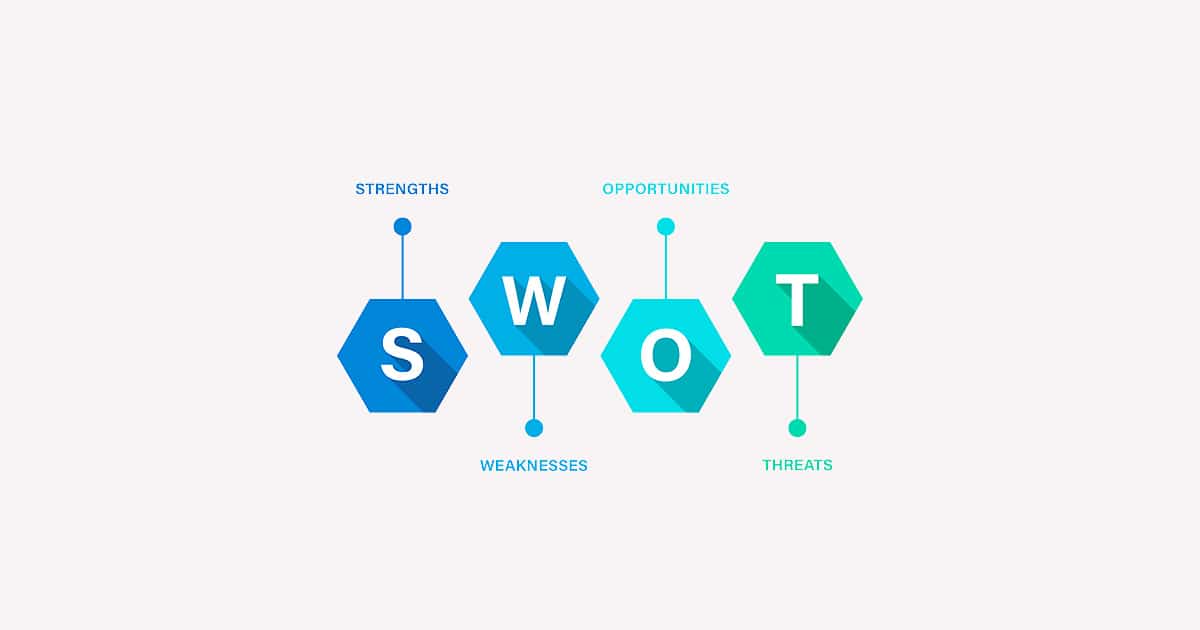
Photo credit: iStockphoto.com (Nastya Bevz)
We’ve all heard of a SWOT analysis. One of the most popular ways to analyze a business or when project planning. Some of us may have been exposed to our first professional SWOT analysis in a college course or early into our careers. The whole concept was derived from being able to dig deep into areas of a plan and pinpoint the strengths, weaknesses, opportunities, and threats. This technique can be used in almost any type of business.
Originated in the 1960s by management consultant, Albert Humphrey, he worked at the Stanford Research Institute and developed this approach specifically for corporate planning. It’s straightforward framework accesses what an organization can and cannot do as well as its potential opportunities and threats.
A SWOT analysis can be used across many industries. Although it’s mainly used for business ventures, it can really be used to measure most things that are influenced by internal and external factors. So, why not use it for yourself? As humans, we are always being influenced both by our internal instincts as well as what other external elements. A personal SWOT analysis can be your next strategic move.
Just like you would use this tool professionally to determine an outcome, a personal SWOT analysis can help evaluate your goals. It’s all about how you perceive the exercise too. Portraying your personal goals into a business model can seem a bit off-putting, but it works.
Here are a few ways you can create your own personal SWOT analysis for your career development:
Define your SWOT
First things first, before you can test this method with a goal, you should try it on your personal self. Define your SWOT challenges. What are your own personal strengths, weaknesses, opportunities, and threats? This may become a bit hard since we are all bias to ourselves. Ask a friend or a family member to help assist! But the goal is to challenge yourself and identify the things you feel you bring to the table and areas for improvement.
Explore each category
Although we may be bias about ourselves, we usually know when something is true even if we deny it. You may want to assess these a bit deeper to understand and be able to learn from the activity. This is going to help you in your next job interview or the next time you need to make a big decision.
Determine an outcome
The takeaways you’ll learn by doing this exercise are going to help you understand your situation better and generate a definitive view of expectations within yourself and future outcomes. Although it may become difficult to see certain aspects, this will ultimately help you when pitching yourself, your goals, and your potential.
As people evolve, so do their strengths and weaknesses. These can change over time, so, just because in this moment the outcome may read one way doesn’t mean it determines it for the next time. But also, knowing now what you may not agree on can help you develop both personally and professionally. Challenge yourself to do a personal SWOT analysis and see for yourself whether it’s something that will provide a clearer picture into future goals!
Personal development counteracts with professional development. Are you looking for ways to go about both? Check out Luminary for available programs and events that uplift, up-skill, and propel others forward through all phases of both their personal and professional journeys.
A first-of-its-kind, Luminary is a membership-based global professional growth platform and collaboration hub created for women and male allies to address the systemic challenges impacting women across all industries and sectors. The ultimate career advocate, Luminary provides “real world” advice, tools, and resources to advance, build, connect, and develop through programming and networking opportunities.
With no application process, Luminary is committed to diversity, equity, and inclusion. We invite you to come sit at our table because we are all in this together!
This article was originally published on weareluminary.com by Amanda Ehrenreich.